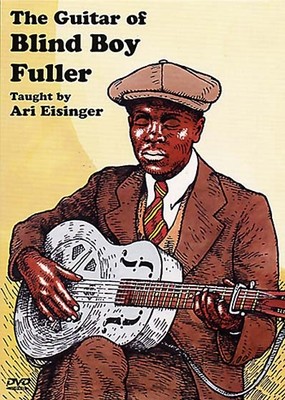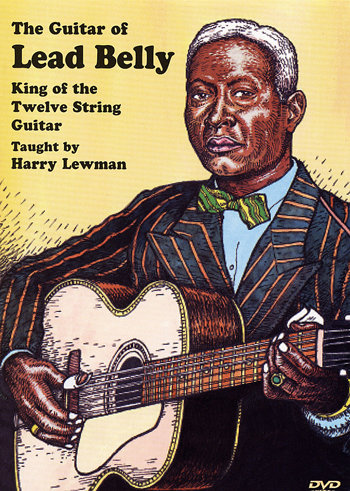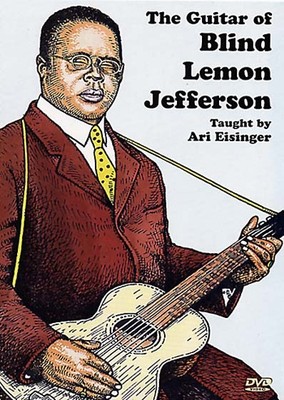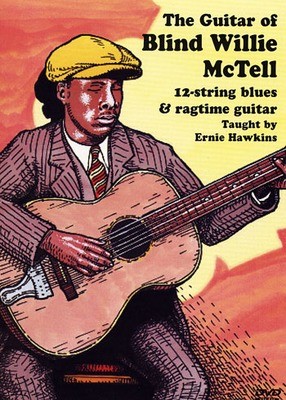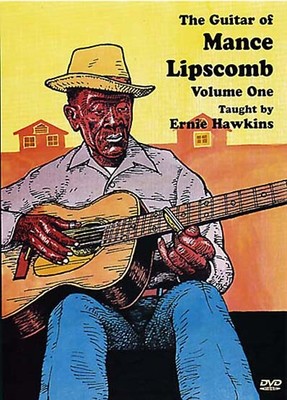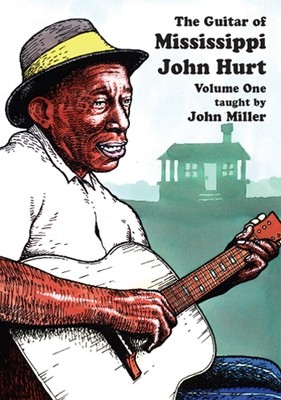
Guitar of Lead Belly: King of 12-String Guitar - taught by Harry Lewman
Today, Huddie "Lead Belly" Ledbetter (1888-1949) is regarded as one of America’s greatest and most influential folk musicians. Lead Belly and his recordings have been the touchstone and inspiration for thousands of musicians, painters, sculptors, writers and just plain folk. Born before recordings, Lead Belly’s career spanned the era of minstrel shows, the Blues craze of the 1920’s, and the dawn of the singer/songwriter. He was musically influenced by Blind Lemon Jefferson, the most popular solo blues guitarist/vocalist of the 1920’s and his musical and personal influences on Woody Guthrie helped form the way in which all American singer/songwriters write and play to this day. Lead Belly’s repertoire was as varied as a solo musician could hope to encompass.
In this DVD lesson – the first to ever show how Lead Belly played his booming 12-string guitar – Harry Lewman explores the stories behind the songs, and explains in detail the unusual way in which Lead Belly tuned, strung, and played the 12-string guitar. Rare footage of Lead Belly is also featured in this lesson.
Titles include: Where Did You Sleep Last Night, Midnight Special., Goodnight Irene, Good Morning Blues, Bourgeois Blues, Silver City Bound, Fannin Street and You Know I Got To Do It.
81 minutes • Level 2/3 • Detailed tab/music PDF file on the DVD
Review: Yet another in the mega volume series of classic blues player instruction videos from Stefan Grossman's Guitar Workshop. This one features the noted folk/blues 12 string guitarist Lead Belly, whose distinctive picking style influenced many in the folk revival of the sixties. Lead had a posthumous nationwide hit with "Goodnight Irene" when The Weavers covered it-during his life he was a fabled performer in the New York City folk scene with Woody Guthrie and Sonny Terry. He'd been discovered by folk-lorist John Lomax while on a song collecting trip in the south, and went to work for him as a chauffeur upon his parole-which was legendarily gained by a recording that Lomax made of Lead pleading for his freedom. Before his death in 1949 Lead played in Europe and across the US, and made countless recordings for the Library of Congress and Folkways Records.
This 80 minute video features Harry Lewman explaining eight of Leads tunes, including "Irene" and his hallmark number "Fannin Street." At first glance Lewman seems to be an unlikely candidate to be doing this, he resembles a nervous assistant professor, with a rather generic vocal style. But he does have the playing down, and even comes up with some moves and patterns that were new to picker Dave Ray, whose been playing Lead Belly tunes since 1961. This set is designed for intermediate players; first Lewman performs the tune, then breaks down some of the unusual component parts using split screen, with picking hand shown on one side, fretting hand on the other. Unlike many tapes of this genre, Lewman doesn't go into detail about which finger goes on which fret-you have to pick it up from watching his hands. There are a couple of break-through points made early on. The first is that Lead used quite heavy strings, and tuned the guitar down low-in fact a 4th down from the usual pitch; his E strings are tuned to the B below them. He also explains that Lead used a plastic thumb pick and a metal finger pick to get his heavy boogie bass and syncopated chordal/melody picking. As for innovations, the tab book included was computer generated by using Lead Belly recordings to create MIDI sequences, which were then transcribed.
Following the lessons, there are several tunes "performed" by Leadbelly, including "Gray Goose" and "Pick A Bale Of Cotton". (These were previously seen in another Grossman video, Legends Of Country Blues Guitar, Vol 2".) This color footage was originally shot as silent, Lead was playing along with some previously made recordings, moving his hands and lips in sync. The film lay dormant for years, until Pete Seeger took on the project and managed to sync up (more or less) these tunes. They give a glimpse into the charismatic power that Lead owned.
Does the tape work? As far as it was designed to, yes. It can teach you how to replicate many of Leads stylistic nuances and picking habits. But as always, you have to supply the soul and conviction to put the songs across. Ands that's something no tape can teach. – Tony Glover
